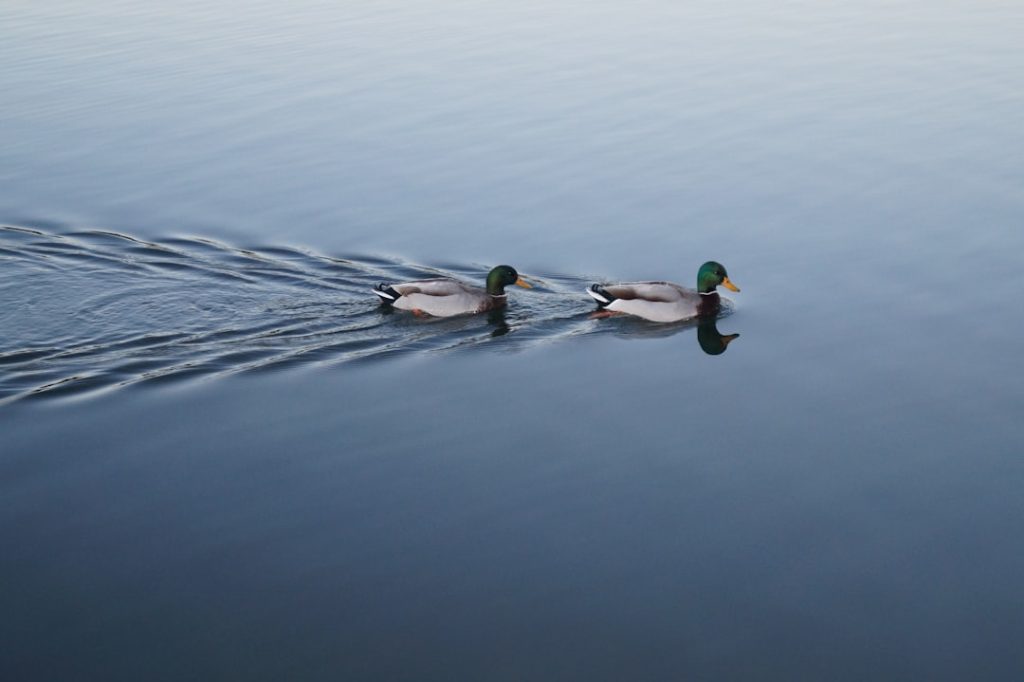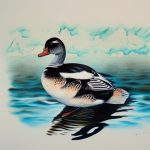Spotted duck breeds are a unique and visually striking group of ducks that are known for their distinctive spotted or mottled plumage. These ducks come in a variety of colors and patterns, with spots ranging from small speckles to large patches. Spotted duck breeds are popular among duck enthusiasts and breeders for their eye-catching appearance and friendly disposition. They are often kept for ornamental purposes, as well as for their ability to lay eggs and provide meat. Spotted duck breeds can be found all over the world, and each breed has its own set of characteristics and traits that make it unique. Whether you are a seasoned duck breeder or a novice enthusiast, spotted duck breeds are sure to capture your attention and add a touch of beauty to your flock.
Table of Contents
Key Takeaways
- Spotted duck breeds are known for their unique and eye-catching markings, making them popular among duck enthusiasts.
- Spotted duck breeds are generally hardy and adaptable, making them suitable for various climates and environments.
- Some popular spotted duck breeds include the Magpie, Indian Runner, and Ancona, each with their own distinct characteristics and traits.
- Proper care and maintenance of spotted duck breeds include providing a balanced diet, clean water, and adequate shelter.
- Breeding and reproduction of spotted duck breeds require careful consideration of genetics, nesting conditions, and proper incubation methods.
Characteristics of Spotted Duck Breeds
Spotted duck breeds are known for their striking appearance, with their mottled plumage being their most distinctive feature. These ducks come in a wide range of colors, including black, white, blue, and silver, and their spots can vary in size and shape. Some spotted duck breeds have a more uniform distribution of spots, while others have larger, more irregular markings. In addition to their unique appearance, spotted duck breeds are also known for their friendly and sociable nature. They are generally docile and easy to handle, making them a great choice for beginners or families with children. Spotted duck breeds are also good foragers and can adapt well to a variety of environments, making them a versatile choice for both rural and urban settings.
Popular Spotted Duck Breeds
There are several popular spotted duck breeds that are favored by breeders and enthusiasts alike. One of the most well-known spotted duck breeds is the Magpie duck, which is characterized by its striking black and white spotted plumage. Magpie ducks are known for their friendly temperament and excellent egg-laying abilities, making them a popular choice for both ornamental and practical purposes. Another popular spotted duck breed is the Ancona duck, which features a mottled black and white pattern that gives it a distinctive appearance. Ancona ducks are known for their hardiness and adaptability, making them a great choice for backyard flocks. Other popular spotted duck breeds include the Saxony duck, which has a beautiful blue mottled plumage, and the Silver Appleyard duck, which features striking silver and white spots.
Care and Maintenance of Spotted Duck Breeds
Caring for spotted duck breeds requires attention to their specific needs and requirements. These ducks should be provided with a spacious and secure enclosure that includes access to water for swimming and foraging. Spotted duck breeds are excellent foragers and should be given access to a varied diet that includes grains, greens, and protein sources. It is important to provide them with clean water for drinking and bathing, as well as shelter from the elements. Regular grooming and maintenance of their plumage is also important to keep them healthy and looking their best. Additionally, regular health check-ups and vaccinations are essential to ensure the well-being of spotted duck breeds.
Breeding and Reproduction of Spotted Duck Breeds
Breeding spotted duck breeds requires careful selection of breeding stock to maintain the desired color patterns and traits. It is important to choose healthy, well-maintained ducks with good genetic diversity to ensure the success of the breeding program. Spotted duck breeds typically reach sexual maturity at around 5-6 months of age, at which point they can begin mating and laying eggs. It is important to provide them with suitable nesting areas and conditions to encourage successful breeding and egg-laying. Proper care and nutrition during the breeding season are essential to ensure the health and fertility of the breeding stock. Additionally, it is important to monitor the incubation process and provide proper care for the ducklings once they hatch.
Health and Common Issues of Spotted Duck Breeds

Spotted duck breeds are generally hardy and resilient, but they can still be susceptible to certain health issues if not properly cared for. Common health issues that may affect spotted duck breeds include respiratory infections, parasites, and injuries from predators or environmental hazards. It is important to provide them with a clean and safe environment, as well as regular veterinary care to monitor their health and address any potential issues. Proper nutrition, regular exercise, and access to clean water are also essential for maintaining the health and well-being of spotted duck breeds. Additionally, it is important to be aware of any changes in behavior or appearance that may indicate a health problem, and to seek prompt veterinary care if necessary.
Conclusion and Final Thoughts on Spotted Duck Breeds
In conclusion, spotted duck breeds are a unique and visually striking group of ducks that are popular among breeders and enthusiasts for their distinctive appearance and friendly nature. These ducks come in a variety of colors and patterns, with spots ranging from small speckles to large patches. Popular spotted duck breeds include the Magpie duck, Ancona duck, Saxony duck, and Silver Appleyard duck, each with its own set of characteristics and traits. Caring for spotted duck breeds requires attention to their specific needs and requirements, including providing them with a spacious enclosure, a varied diet, regular grooming, and proper healthcare. Breeding spotted duck breeds requires careful selection of breeding stock, proper nesting conditions, and monitoring of the incubation process. While spotted duck breeds are generally hardy, they can still be susceptible to certain health issues if not properly cared for, so it is important to provide them with a clean and safe environment, regular veterinary care, and proper nutrition. Overall, spotted duck breeds are a beautiful and rewarding addition to any flock, bringing both ornamental beauty and practical benefits to those who choose to raise them.
If you’re interested in learning more about spotted duck breeds, you might also want to check out this helpful article on how to convert a shed to a chicken coop. It provides valuable insights into repurposing existing structures for poultry housing, which can be useful for anyone considering raising ducks or chickens.
FAQs
What are spotted duck breeds?
Spotted duck breeds are a type of domestic duck that have distinct spotted or mottled patterns on their feathers. These patterns can vary in color and size, and are a defining characteristic of these breeds.
What are some examples of spotted duck breeds?
Some examples of spotted duck breeds include the Magpie duck, the Ancona duck, and the Saxony duck. These breeds are known for their striking spotted plumage and are popular among duck enthusiasts.
What are the characteristics of spotted duck breeds?
Spotted duck breeds are typically medium to large in size, with a sturdy build and a slightly upright stance. They have a friendly and docile temperament, and are known for their excellent foraging abilities.
What are the uses of spotted duck breeds?
Spotted duck breeds are primarily kept for their eggs and meat. They are also popular as ornamental or exhibition birds due to their attractive spotted plumage.
How do you care for spotted duck breeds?
Spotted duck breeds require a suitable living environment with access to water for swimming and foraging. They also need a balanced diet, protection from predators, and regular veterinary care to ensure their health and well-being.
Meet Walter, the feathered-friend fanatic of Florida! Nestled in the sunshine state, Walter struts through life with his feathered companions, clucking his way to happiness. With a coop that’s fancier than a five-star hotel, he’s the Don Juan of the chicken world. When he’s not teaching his hens to do the cha-cha, you’ll find him in a heated debate with his prized rooster, Sir Clucks-a-Lot. Walter’s poultry passion is no yolk; he’s the sunny-side-up guy you never knew you needed in your flock of friends!







